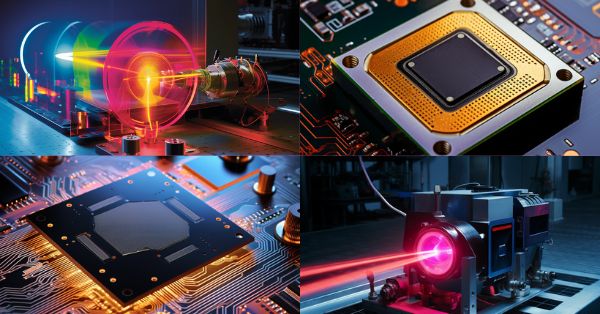Jan. 24, 2024

High Energy Optics
High-energy optics are vital to the successes that high-power laser systems have achieved in the energy research and defense sectors in recent years, highlighted by Lawrence Livermore National Laboratory scientists demonstrating fusion ignition in 2022. For practical industrial applications, market demand and current optics technology are similarly converging, enabling a range of new performance benchmarks. Given the function that the optics in these systems hold, and the desire for increasingly high power laser systems and applications that require them, this article examines if current high energy optics on par with, or inhibiting the ubiquity that high-energy systems are achieving. Specific applications, as well as design considerations, are spotlighted through a lens that considers the present and future demands of high-energy components and systems.
Key Technologies: High-Energy Optics, Industrial Lasers, Optics Manufacturing
Mid-IR Sources
The design, fabrication, and utilization of mid-IR sources is driven by their utility for ambient gas sensing, which has emerged as a core application for these laser systems and quantum cascade lasers in particular. Accordingly, the performance capabilities of Mid-IR sources, as determined by tunability, beam quality, and viability for integration are top of mind for systems integrators working across industrial, military, and environmental application areas. This article overviews the aforementioned measurables that make mid-IR sources a preferred tool for gas sensing applications, with a focus on common deployments and design considerations.
Key Technologies: Mid-IR sources, QCLs, Beam Combining, MIR Spectroscopy
Machine Vision Sensors
As custom stacked CMOS sensor technology comes into reach of commercial applications, especially those supporting the factory, industrial, and machine vision sectors, heightened focus has been placed on the innerworkings of the technology. This article identifies and explains the technology, presented as a continuation on CMOS manufacturing/manufacturing techniques. The article additionally considers current and anticipated end-market drivers that are prompting/are forecasted to prompt development of this technology, as well as early best practices for implementing this sensor technology in end-applications.
Key Technologies: CMOS, Machine Vision Sensors, Photodiodes
Programmable Photonic Integrated Circuits
The integration of programmable photonics into a new generation of optical communication products will be crucial to support the softwarization trend, which aims to enhance network flexibility and reduce power consumption. By incorporating software capabilities into photonic circuits, network operators can dynamically configure and optimize data processing, leading to improved network performance and energy efficiency. This article will focus on how software-enabled PICs can facilitate the implementation of energy-saving strategies, such as dynamic antenna switching and power gating, which can significantly reduce network power consumption. Moreover, we will explain how programmable photonics can enable real-time network monitoring and adaptation, allowing operators to optimize network resource utilization and minimize energy wastage.
Key Technologies: PICs, Optical Communications, Datacom, Optical Interconnect
Download Media Planner